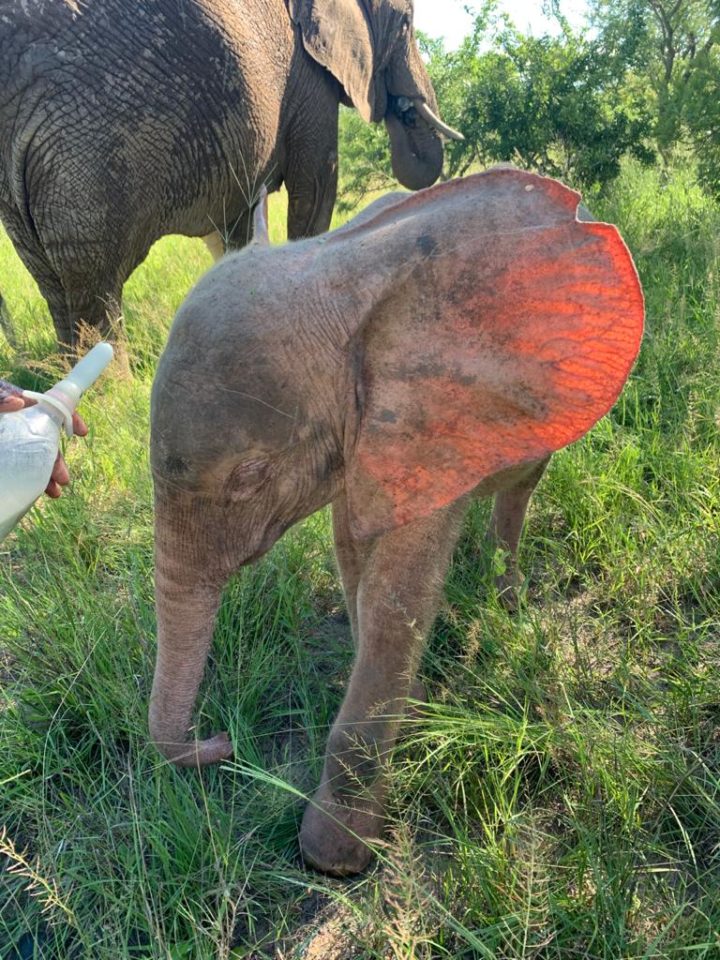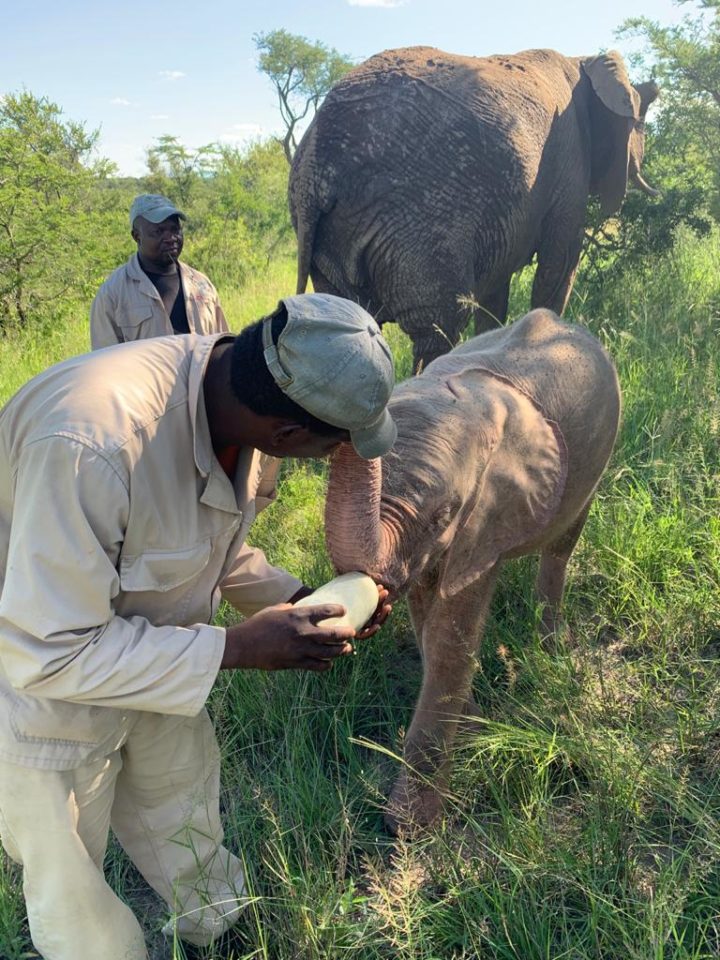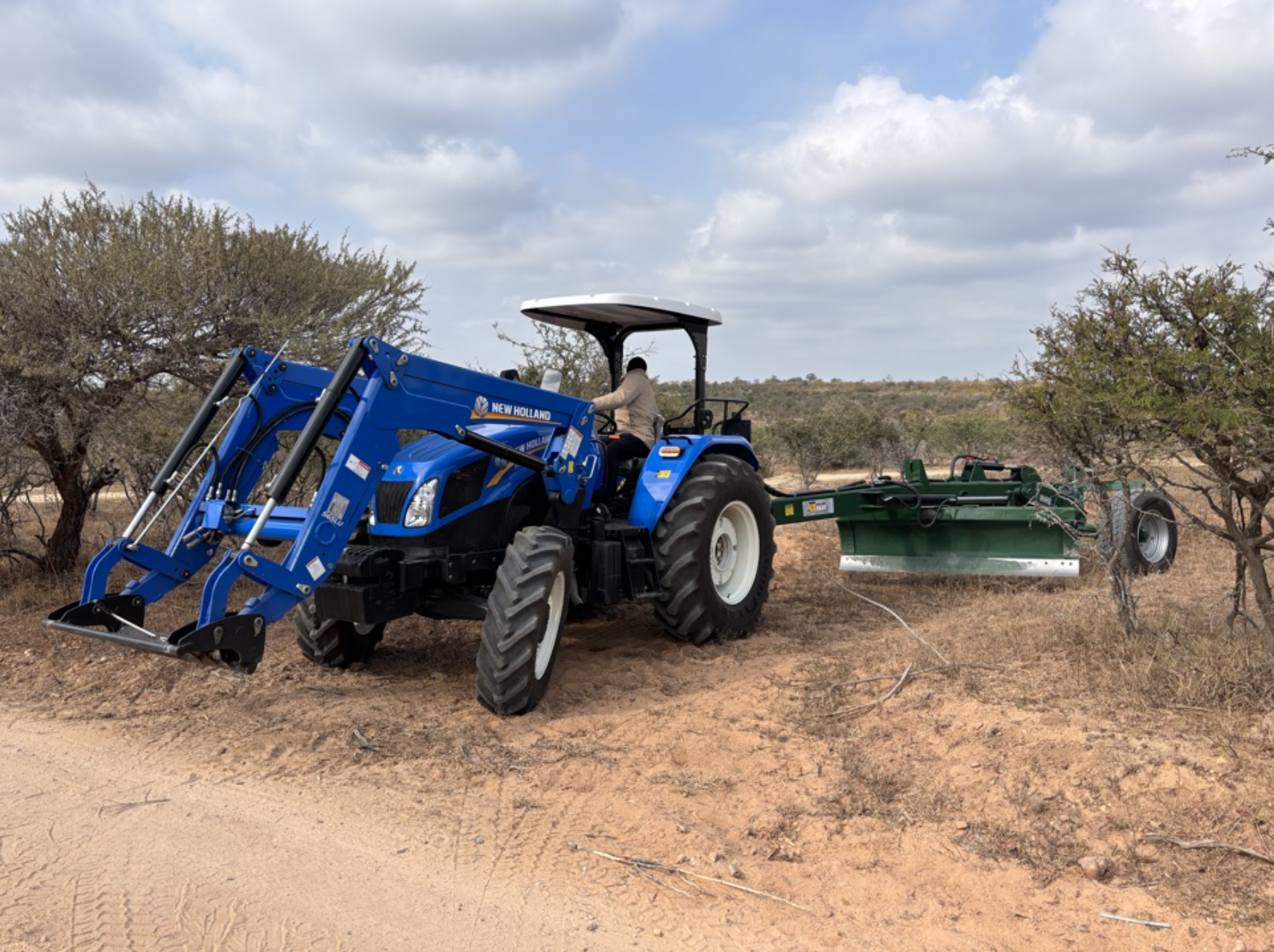A Blog by Adine Roode, Founder of HERD…
You might have noticed Khanyisa getting very tall lately! It’s always more visible when you see her beside a human rather than another much larger elephant. Sunshine not only grew some long and lean legs before our eyes but she is filling out nicely now too.
But a lot has been going on behind the scenes while Khanyisa is growing up and spending time out in the bush. Our team carries out daily checks on the little calf and sometimes it’s necessary to get extra assistance and opinions from our advisors to touch base on the various aspects of caring for the orphan and the running of HERD.


We recently added a new advisor to our team, Dr Ricky Dippenaar, a neonatologist. Dr Dippenaar went through all our previous calculations and I explained to him why we have done certain things in certain ways. I brought him up to speed, before he started doing his own calculations. I do think he had a good old giggle to see my long way of getting to an answer and how I sometimes make it more complex and complicated than it needs to be, but this is how I work in order to understand something (this drives my children mad as I am not always able to communicate my way of thinking, and I am sure Dr Dippenaar shared their sentiment, without giving me grief)!
One of the greatest challenges and essentials in caring for baby elephant orphans is making and providing the correct milk formula to ensure that fast-growing calves receive the correct nutrition. A baby elephant’s milk formulation is exceptionally delicate and needs frequent adjustment, with extra nutritional supplements as they grow, as their mother’s milk would change naturally through the weaning stages and evolving needs.
We found that Khanyisa was lagging a bit in her weight and took blood tests recently to see if there were any issues we weren’t aware of. The results showed low iron but nothing else, thankfully. So we have adjusted her milk formula to provide more of the nutrition that her growing body needs as it changes.
Especially as Khanyisa was approaching a year old, it was necessary to alter and make changes to her milk supplement. As per a research article published, there are strong changes in the milk composition of lactation more or less up to 12 months and then little changes after this. However, with Khanyisa, we are entering a trial period of phasing out the amino-acid and hydrolysed milk supplement to give her a higher casein protein-based diet. With these changes, Khanyisa didn’t really gain weight, but was also not losing weight. Starting the changes in middle October 2020, by middle November we were 4 weeks in and I was concerned that we were not on track.
We had some challenges on hand. Not only with changing the milk supplement, but also the frequent rain and the elephants having lots to forage and various mud pools along the way, which they love splashing in. Having a strict sanitising protocol to eliminate human contagious diseases or illnesses, I could have overdone the sanitising and kept her from acquiring natural immunity, however I was convinced that this would not be the case, as from an early age with her, we played in water streams, swam in the waterholes and she put many natural things into her mouth. So I parked the concern. Additionally, Dr Dippenaar was at first not too concerned as the higher protein and fats in her diet from the altered milk will naturally show a slower growth and he suggested that we give it another 2 weeks.
When Khanyisa came back one day from a day out in the bush, she was exhausted and slept well, however her stools were exceptionally loose between the hours of 6pm till 12am, when it then stabilised again. Although having a full-time carer with her during the day to feed, it is also not always possible to see what her stools look like. The frequency of the stools however was in line. Our formula’s composition was perfect and the same as I worked it out. I upped her volume slightly, but she didn’t always finish her bottles. Her energy was great and she didn’t show any signs to be concerned about, other than adding weight… I even tested the scale!
In order to confirm if everything was well with Khanyisa, Dr Dippenaar required bloods and stools to be analysed by the laboratory. Dr Peter Rogers is never keen to sedate an animal unnecessarily and we need to identify our risks. I don’t like to sedate the babies and my uncle who is also a pediatrician in Hoedspruit, assisted me in getting a butterfly needle as used with babies. I could then take blood during the night when Khanyisa slept so we didn’t have to sedate her.
A butterfly needle is supposed to make drawing blood more manageable as it does when taking blood from babies or children, as the needle is thinner to accommodate these smaller veins. When we take blood from elephants, you can either use the veins in the ear, or the hind leg, but in this case I would use the cute butterfly needle for the veins in her ear. Or so I thought… There were a few evenings where I tried, while Khanyisa was sleeping and going into insect period with the rains, she must have thought these silly mosquitos are pestering her.
Every time I got this nice thin needle in – which by the way works well, even in her not-so-thin veins – she would flap her ear and off would fly butterfly needle, landing in her bedding. The HERD carers were helping me, so that when and if we got the needle in, we could bring all the coloured tubes to fill them.
Later we tried to keep her ear still, but of course that was not a good plan either as she then would get up and move to another place in the nursery. My uncle was even happy to come and help, but driving around at that time of the night and bringing in people that she doesn’t know is also not an answer. My uncle, Dr Louw du Toit assisted Dr Peter Rogers years ago with Jabulani as a baby and he has many interesting things to tell me about those days, which hasn’t been recorded.
So we were just guessing at this stage about what could be the reason for Khanyisa not gaining weight and in order to know, we needed blood and dung.
We had come so far with her rehabilitation and we couldn’t afford to make any wrong decisions now. I can always go on my experience, but we need facts. We are blind without facts. I turned to Dr Rogers for assistance for the next step to sedate her and take samples. Previously it happened that blood samples got lost in the courier to the laboratory or that the tests we requested were not done, so this time I used 2 laboratories. I wanted to prevent any mishap.
One set of samples was sent by Dr Rogers and the other set was sent by me – the results going directly to Dr Dippenaar and Dr du Toit. I kind of drove everyone crazy to make sure all the boxes were ticked for what we needed, that the delivery to the local lab was on time for their couriers to deliver it to the next lab, and then to make sure a sample was sent to their head office as it seems to have specialised machines. I was actually planning to take the samples through to the lab in Pretoria myself, as I was adamant to have no flaws in the results.
Luckily we did two sets of samples, as the one lab made an error and when we went back to both to check the results for a second time, we were satisfied that both results were the same. But I am running ahead with this story. Let me go one step back to taking the blood….
We started early in the morning as I didn’t want to change too much in the daily routine as the Jabulani herd will be stressed out if Khanyisa doesn’t join, and also because of the heat, it is just better to do these procedures early morning when it is cooler. We used a standing sedation with BAM, which has very little negative impact. *During the trial periods of BAM by Wildlife Pharmaceuticals, we participated in the trials, as I believe in using BAM as a safe option. Read more >
We filled a few bottles, with different coloured lids – orange, purple, blue and green. I fetched some tubes from the lab and Dr Rogers brought some too. We requested Pre-Albumin, Total Protein, Plus liver functions K, Ca, Ureum, Magnesium, P and full U&E for Bicarb and anion gap etc. Dr Rogers also took the opportunity to give Khanyisa extra minerals intramuscular and intravenously. The sedation is always stressful, and we were relieved when it was done. It was quick yet felt like ages.
We also took a dung sample during the night plus a faecal swab and requested to do a microscopy and to check for culture reducing substances as well as any parasites in the dung.
When Khanyisa was waking up, she rumbled and the whole herd came towards the nursery. They waited in the stables and would not move away. Their eyes were fixed on her. I could see the cows stressing and even Sebakwe was unhappy. She was not completely stable on her legs, but rushed off in their direction. I had to make a call and Dr Rogers agreed that we could let her join the herd, but keep an eye on her.
It took 3 days for the first results to arrive. The urea was high and Dr Dippenaar asked to do a dipstick test – which came out all normal. We waited for the last test results. It seemed she was slightly anaemic. It was not life-threatening, but can cause poor growth and is also an indication of malabsorption. It can be treated either by iron supplementation or blood transfusion.
Previously we did blood transfusions, but an iron supplement is always my first choice. We started with an intramuscular iron injection to treat iron deficiency and added an iron supplement to Khanyisa’s daily milk to make sure that her iron stores were sufficient. It usually takes 6 weeks to make the extra blood and we would then need to take blood again to see if she was still anaemic.
I spoke to Dr Johan Marais and we went through possible reasons for Khanyisa being anaemic and having an iron deficiency. In rhinos, you often get ulcers and we decided to also put Khanyisa on a course to treat and prevent ulcers.
During this time Dr Rogers was on leave with limited signal and I was also on holiday, when the little naughty corona got hold of me, but luckily I was away and not in close contact with staff and elephants and I could organise everything telephonically.
While we continue to monitor Khanyisa’s changes as a growing baby elephant, we are happy and relieved to say that Khanyisa is now toppling the scale again!
Sometimes the reading can be slightly inaccurate by a kilogram here or there due to her walking on the scale or leaning on the fence, but her weight is clearly around 290-294 kilograms.
She certainly is gaining weight again. It might have been a growth spurt, and she got taller and leaner, without gaining weight as a previous orphan, our beloved Mopane also didn’t gain weight between approximately 15 – 17 months around the weight of 261kg.
Khanyisa was around 16 months when she started gaining weight again, so it’s interesting to note that both orphans stayed around the same weight area of their 260’s kg at this age, with their growth chart featuring the same curve.
When there is lack of certainty, we always reach out to our valued experts and doctors to assist and give us some clarity and a solution before communicating the news, but we hope that this information provides you with a greater understanding of caring for vulnerable elephant orphans and babies, and why Khanyisa may have seemed thinner than we would have liked at times.
We haven’t been recording her height, but thanks to Lifemax, who donated a Seca aluminum height rodwill to us, we will be able to track Khanyisa’s height going forward!
She is certainly growing tall and filling out beautifully now, but we will be sure to update you with more news, and to potentially carry out another blood sample soon. Maybe I should try the butterfly again…
Thank you for your amazing love, support and engagement throughout this journey with us!




 Comment
Comment






Thanks for writing such a good article, I stumbled onto your blog and read a few post. I like your style of writing…